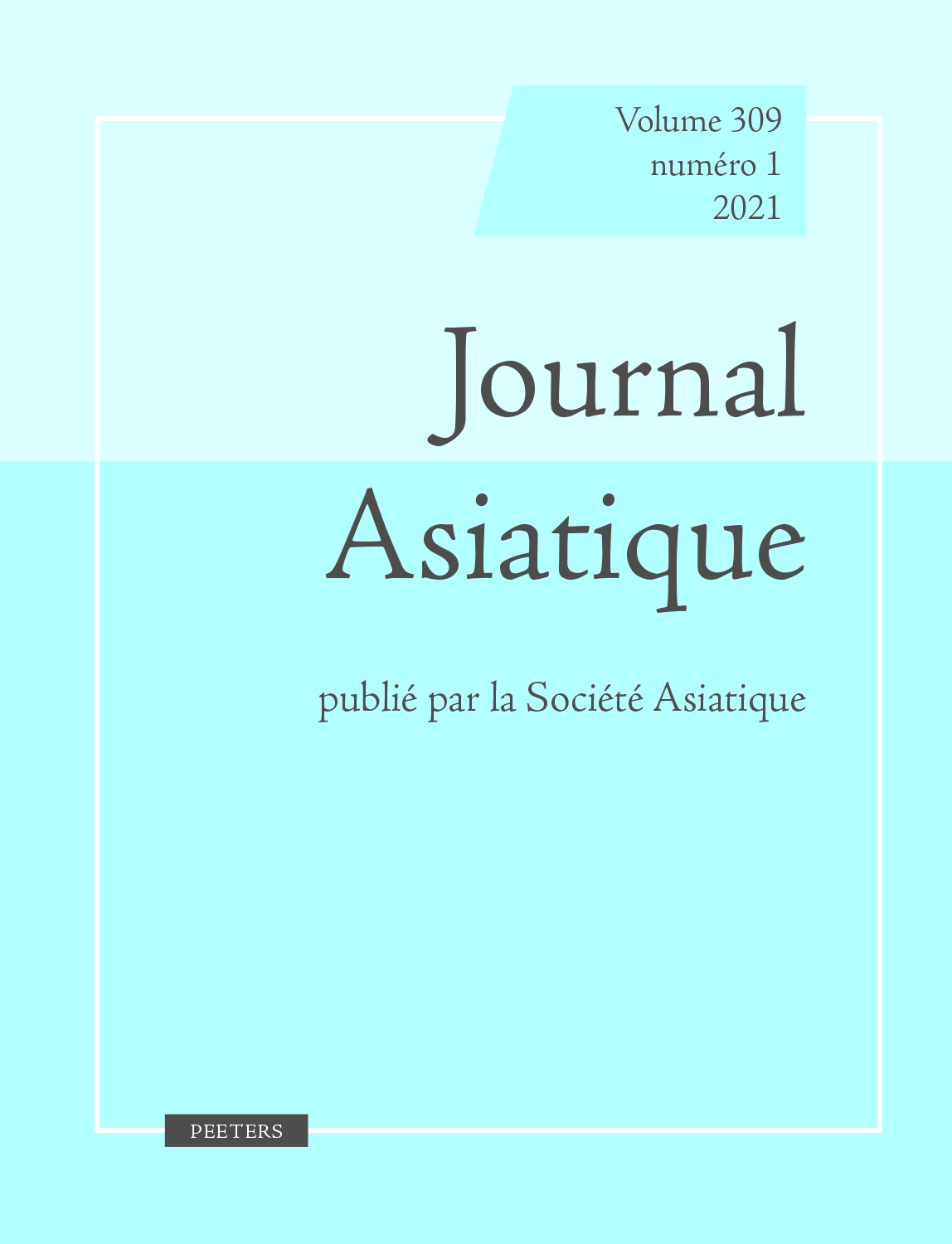 previous article in this issue previous article in this issue | next article in this issue  |

Preview first page |
Document Details : Title: Un fragment de planchette de bois en tokharien B Author(s): OGIHARA, Hirotoshi , PINAULT, Georges-Jean Journal: Journal Asiatique Volume: 298 Issue: 1 Date: 2010 Pages: 173-202 DOI: 10.2143/JA.298.1.2055072 Abstract : This article contains the first edition of a wooden tablet written in Tocharian B, which has been known from a photograph published in 2006 in a Chinese book. The exact find-spot of this tablet remains unknown, but it ought to come from the western part of the Tarim basin, in Xinjiang, China. For the most part, the text can be read and understood, except for some parts of lines which have been worn away. This document records the distribution of alcoholic drink to different persons on the 30th day of the last month in the year. Judging from the ductus of the handwriting and from the stage of the Tocharian B language, it can be approximately situated in the mid 7th century CE: the text shows several features of the familiar language used in the profane manuscripts of the Kuča region, but it does not belong to the latest phase of the language. This edition contains a provisional translation, a commentary on the content and the language, and a glossary. L’article donne la première publication d’une planchette de bois écrite en tokharien B, connue par une photographie publiée en 2006 dans un livre chinois. La provenance exacte de cette planchette est inconnue, mais elle provient certainement de l’ouest du bassin du Tarim, au Xinjiang, Chine. Le texte est en grande partie lisible et intelligible, bien que certaines parties soient effacées par usure. Il contient le relevé d’une distribution de boisson alcoolisée à différentes personnes à l’occasion du 30e jour du dernier mois de l’année. D’après le ductus de l’écriture et le niveau de langue, ce document peut être situé approximativement au milieu du VIIe siècle de notre ère: il présente plusieurs traits de la langue vulgaire rencontrée dans les manuscrits profanes de la région de Kuča, mais il ne se situe pas au stade le plus tardif. Cette édition est accompagnée d’une traduction provisoire, d’un commentaire sur le contenu et sur la langue, et d’un glossaire. |
|


